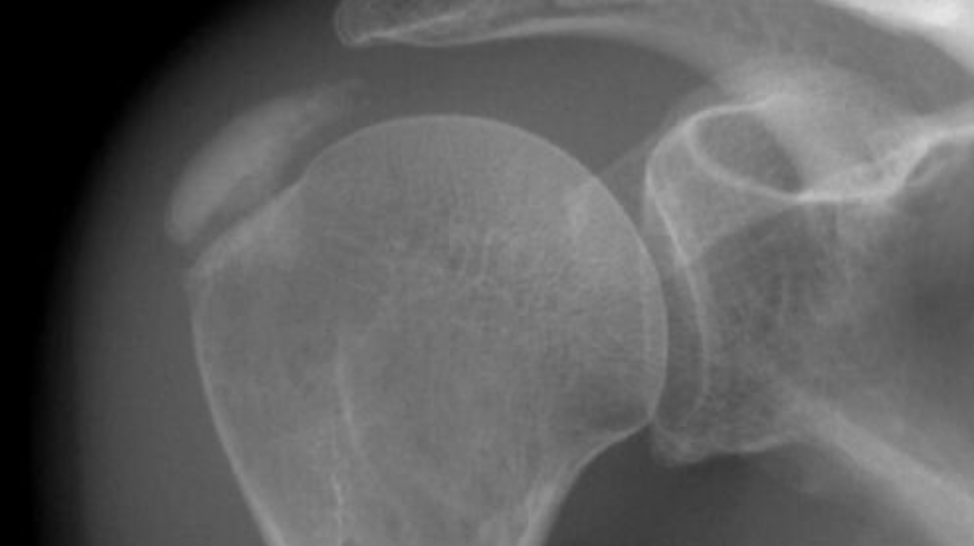Arthroscopic Excision of Calcium
Why might I need an arthroscopic excision of calcium?
Mr Moverley will recommend this procedure if you are experiencing symptoms related to calcific tendinitis. The typical symptoms are severe pain and reduced movements. Surgery is only indicated once an appropriate course of non-operative treatment has been undertaken and symptoms persist to an unmanageable level.
What does surgery involve?
On the day of surgery you will be admitted to the ward or surgical admission area. You will once again meet Mr Moverley who will ensure you are still happy to proceed and that you understand the risks and benefits of the procedure. This is a good opportunity for you to ask any further questions. You will be asked to sign a consent form if you have not already done so.
Mr Moverley may request a repeat x-ray on the morning of surgery to make sure the calcium deposit is still present.
You will meet your anaesthetist who will explain the type of anaesthetic you will receive. Arthroscopic shoulder surgery usually requires a general anaesthetic (you will be asleep) and a nerve block so that the arm will be numb for approximately 12 hours post operatively.
An arthroscopic excision of calcium is performed as a ‘key-hole’ procedure through 3-4 small incisions at the front and back of your shoulder. Mr Moverley will be able to assess the inside of your shoulder in great detail using a high-resolution camera to establish the most likely causes of your symptoms.
The objective of surgery is to remove the calcium from within the rotator cuff tendon using a needle and a small shaver. If the deposit of calcium is very large then a portion of the tendon may need to be repaired using small anchor and sutures at the end. This is rarely necessary but will delay you rehabilitation.
Mr Moverley will then release any inflamed and contracted tissue as well as shaving away a small amount of bone from the front of the acromion, to increase space for the tendons.
At the end of the procedure Mr Moverley will gently stretch the shoulder in all directions to ensure a full range of motion can be achieved.
The procedure is usually done as a day case meaning you can go home on the same day as your surgery.
The wounds are repaired with stitches and covered with a splash proof dressing. The wounds should be kept dry for 10-14 days.
What happens post operatively?
Immediately after surgery your arm will be in a sling and will usually feel heavy and numb as a result of the nerve block. You will be given painkillers if you are in any pain, and these will also be provided upon discharge.
A physiotherapist will assess you to make sure that you can remove and apply the sling safely. They will provide some early exercises to help prevent stiffness of the hand, wrist and shoulder.
Physiotherapy is individualised to your specific needs and will progress with the following goals (provided no repair of the rotator cuff was required):
Early (1-2 weeks): Minimize post-operative stiffness with active finger, wrist and elbow movements. Wean off the sling after 2 days. Shoulder pendulum exercises progressing to full active range of movement as pain allows. Posterior capsule stretching exercises.
Middle (2-6 weeks): Continue to achieve full active range of movement. Isometric rotator cuff stretching to treat tendinitis.
Late (6 weeks and beyond): Strengthening program, once full range has been achieved. Graded return to all previous functional and recreation activities.
Approximately how long will it be before I can…?
Drive 2 weeks
Desk job 2 weeks
Manual work 8-12 weeks
Golf 12 weeks
Racket sport 12 weeks
Contact sport 12 weeks
Repetitive overhead activity/sport 12 weeks
Pain can persist for 3-6 months post surgery
What are the potential risks and complications?
As with any operation, a small number of people may have problems after an arthroscopic excision of calcium. Most of these problems are quite minor and can be treated easily but occasionally further surgery is needed.
The main risks are:
Infection (less than 1 % of cases)
Stiffness - Mild stiffness is quite common but occasionally a frozen shoulder can occur (5% of cases) which can prolong your recovery by a few months, it usually responds well to a steroid injection.
Ongoing symptoms
Is arthroscopic excision of calcium always successful?
Approximately 80% of patients will make a good or excellent recovery. 15% will have a small degree of discomfort but will be satisfied with their outcome. 5% of patients will have on-going problems, such as pain and stiffness, and some of these require further surgery.
The results of arthroscopic excision of calcium are therefore not guaranteed which is why Mr Moverley will want to ensure that all non-operative measures have been exhausted first.

